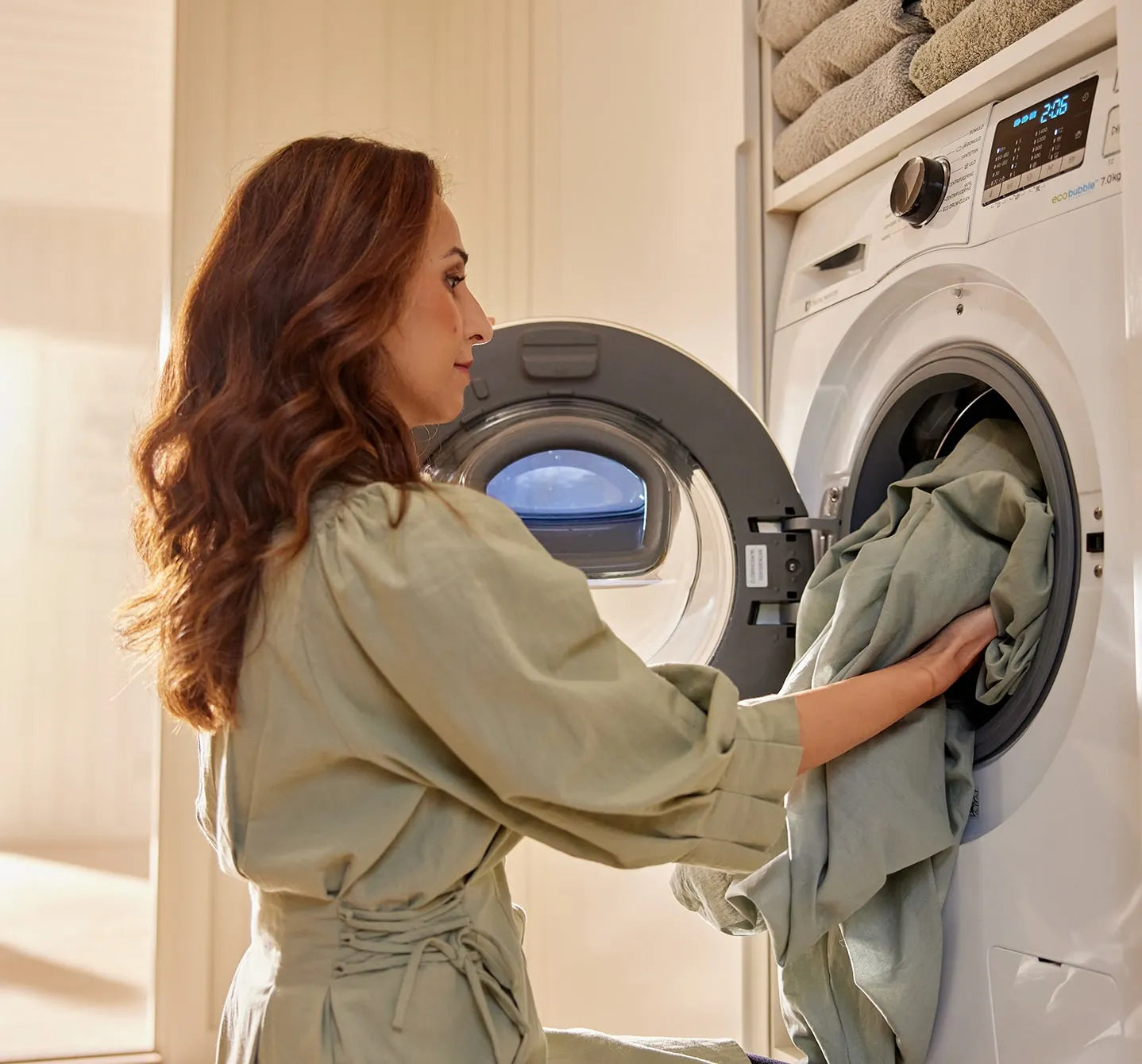How to get rid of dust mites: 10 methods

Removing dust mites from your home is difficult. Not only are they persistent creatures, they’re also microscopic so you can’t see them with the naked eye. Fortunately though, you can reduce their numbers. In fact, keeping dust mite populations low is an important part of dust mite allergy management.
To help you get rid of dust mites, we’ve listed our top 10 methods, which include:
- Keeping humidity levels below 35-50%
- Using dust mite-proof bedding and washing it weekly at 120° F
- Tumble drying your bedding
- Freezing your delicate items
- Decluttering your home
- Wiping surfaces with a damp cloth
- Choosing hard surface floors
- Using a vacuum with high-efficiency particulate air (HEPA) filter
- Using air purifiers with HEPA filters
- Letting the sun shine into your home
When people know more about dust mites, they understand what they need to do to reduce the numbers in their home. So we begin this article by describing what they are and where they live.
Later, we introduce our top 10 methods that can help get rid of dust mites and talk about different dust mite allergy treatment options, including allergy immunotherapy.
What are dust mites and how do they cause allergies?
Dust mites are tiny bugs that are closely related to spiders and ticks. Like some of their relatives, dust mites prefer areas that are warm and humid over those that are dry and arid. So linens and fabrics that trap moisture provide the perfect conditions for them to thrive.
Unlike other mites, dust mites don’t bite, instead, they’re scavengers that rely on your dead skin flakes as their source of food. And considering the average person sheds 5 grams (g) of dead skin per week, dust mites are unlikely to go hungry any time soon.
With that in mind, it's no surprise these tiny creatures can produce up to 200 times their own body weight in waste during their very short lives – the average lifespan of a dust mite is 2-3.5 months.

When people have dust mite allergy, they have allergic reactions to dust mite feces (their poop) and the bugs' shed skin.
Because dust mite waste clings to household dust, removing dust by wiping surfaces with a damp cloth and decluttering dust traps can help keep dust mite allergy symptoms at bay. That said, while you can reduce the number of dust mites in your home, you don’t have this level of control in other places. So it’s important to speak with your healthcare provider who can suggest the most suitable treatment options for you.
How to get rid of dust mites in your home
No home is completely free of dust mites, although those at higher altitudes or in drier climates tend to have less of them. We know that’s not the answer you wanted, but fortunately there are several ways that help get rid of dust mites in your home.
Having said that, before you start ridding your home of these pesky mites it helps to understand where they live.
Dust mites live in soft furnishings, so think carpets, beds, curtains, soft toys and rugs. Because of this people with dust mite allergies experience symptoms all year round, unlike those with seasonal allergies such as hay fever.

Dust mite allergy symptoms include:
- Congested, stuffy nose
- Runny nose, sneezing
- Itchy nose, mouth, or throat
- Post-nasal drip
- Itchy, red or watery eyes
- Coughing
- Wheezing
- Sinus inflammation/pain
- Skin reactions, rashes, eczema
- Tiredness
- A general sense of feeling unwell (malaise)
10 methods to get rid of dust mites
First of all let's be honest, despite keeping your home clean, it's virtually impossible to completely eliminate dust mites. After all, they were even found on the international space station. So do speak to your healthcare provider about how to best treat your dust mite allergy.
1. Keep humidity levels below 35-50%
Reducing the amount of humidity in your home is one of the most effective actions you can take to get rid of dust mites. Ideally, you should keep humidity below 35-50% if you have dust mite allergy. Dust mites grow in environments where humidity is greater than 50% and thrive when it’s between 75-80%. To prevent humidity levels from creeping up, we suggest getting a hygrometer so you can keep tabs on the amount of moisture that’s in the air. Investing in a dehumidifier or air conditioner is also a good idea if humidity is consistently high.
2. Use mite-proof bedding and wash it in hot water at 120° Mite-proof covers can prevent mites from making a home in your mattress, duvet and pillows. However, to actually get rid of dust mites we recommend washing your bedding at least once a week in hot water at 120° F.
3. Tumble dry your bedding
Bedding usually contains a high number of dust mites. After all, we should be spending about 8 hours a night sleeping – so plenty of time for dead skin cells to collect in our warm sheets and duvets. As dust mites are sensitive to hot temperatures, tumble drying your bedding and duvet can kill them. To get rid of dust mites just make sure to let the dryer run for one hour on a hot cycle to help kill dust mites and their eggs.
4. Freeze delicate items
You can use this method for items that aren’t suitable for frequent hot washing, for example, stuffed toys and delicates. Just make sure you leave your items in there for at least 48 hours. However, please do bear in mind that while freezing does kill dust mites it doesn’t remove their allergens. Consequently, it's a good idea to wash everything afterward at the recommended temperature.
5. Declutter your home
While this may sound obvious, the more clutter you have the dustier your home will be. Cluttered homes, not only collect dust but are more time consuming and challenging to keep clean, which makes them perfect environments for dust mites. This being said, you don’t need to start donating your upholstered furniture and cushions just yet. Simply reducing the number of trinkets and house plants in rooms can help get rid of dust mites from your home.
6. Wipe surfaces with a damp cloth
Keeping your home free of dust helps to get rid of dust mites and improves air quality. But when cleaning it’s important you don’t disturb the dust so that it hangs in the air. This is especially important when cleaning large floors and surfaces. Always use a damp mop or cloth that traps the dust, which you can later wash away in a sink.

7. Choose hard surface floors
Choosing to fit wall to wall carpeting in your home isn’t a good idea if you have dust mite allergy, as the fibers make it challenging to get rid of dust mites. Even with frequent vacuuming carpets hold onto more dust than smooth floors and trap heat and moisture – don’t forget, dust mites thrive in warm and humid environments. Additionally, walking on carpet puts more dust mite allergens into the air than hard flooring, which could make dust mite allergy symptoms worse.
8. Use a high efficiency particulate air (HEPA) filtered vacuum cleaner
Vacuuming can help to remove skin flakes and dust mite allergens from carpets. But what it won’t do is get rid of dust mites from the pile. Their feet have clever pads that help them cling to carpet fibers as a hoover passes over them. So the allergens you do catch you want to keep in the bag. A HEPA filtered vacuum cleaner can help with that. It's more effective at removing allergens from carpets than a regular vacuum cleaner because it traps a lot more dust, rather than releasing it back into the room.
9. Use air purifiers with HEPA filters
To improve indoor air pollution some people are using air purifiers with HEPA filters to remove and trap air pollutants, in addition to other airborne particles from their homes. People with dust mite allergy may want to try air purifiers with a HEPA filter in high traffic areas, for example in the hallway where a lot of dust hangs in the air. Nevertheless, more studies are necessary to support the use of air purifiers, so people should prioritize other methods to get rid of dust mites, for example using a dehumidifier and HEPA filtered vacuum cleaner.
10. Let the sun shine into your home
Dust mites are sensitive to changes in temperature and exposure to direct sunlight can damage their eggs. So keep your windows and blinds open on a sunny day to flood your house with light and fresh air. You can also hang your bedding or blankets outside in the sun. Sunlight can help dehydrate or dry out dust mite eggs, which in turn contributes to keeping the dust mite population low.
Learn how to get rid of dust mites and seek treatment
Despite staying on top of cleaning your home, it’s impossible to remove dust mites completely. When you come into contact with an allergen, several types of allergy medications can temporarily ease symptoms. These include antihistamines and corticosteroids.
A more long-term treatment option is allergy immunotherapy. This type of treatment targets the underlying allergy itself, not just the symptoms. Allergy immunotherapy aims to desensitize your body to your trigger. Over time, this helps reduce symptoms relating to the allergen.
Allergy immunotherapy comes in two forms:
- Treatment via injections under the skin also called allergy shots.
- Treatment in tablet. You place the tablet under your tongue.
If you want to learn more about allergy immunotherapy for your dust mite allergy, you should speak with your healthcare provider.


 Find A Doctor
Find A Doctor